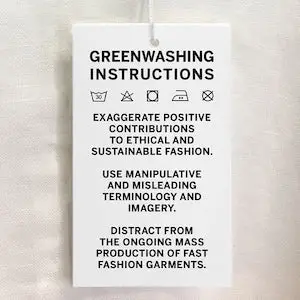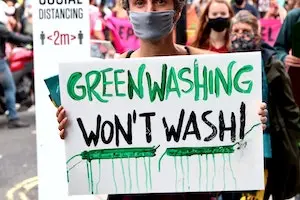Beautiful Thinking.









The beauty industry has witnessed a growing trend towards sustainability and environmental consciousness in recent years. As consumers increasingly prioritize eco-friendly products, companies have responded by adopting greener practices and promoting sustainable packaging solutions. However, amidst this shift, a disconcerting phenomenon known as “greenwashing” has emerged, posing challenges to the integrity of the beauty packaging industry. Greenwashing refers to the practice of misleading consumers into believing that a company’s products or practices are more environmentally friendly than they actually are.
Greenwashing in the beauty packaging industry creates an illusion of sustainability that can deceive and mislead consumers. Companies may employ vague or misleading language, such as using terms like “natural” or “eco-friendly” without providing substantial evidence or transparent information about their claims. This misleading communication can make it challenging for consumers to make informed decisions and can erode trust in the industry as a whole.
Greenwashing can significantly impact consumer behaviour, causing individuals to make choices based on false or exaggerated claims. Consumers who genuinely care about sustainability may unintentionally support companies engaged in greenwashing, inadvertently perpetuating unsustainable practices. This can hinder progress towards a more genuinely sustainable beauty packaging industry by diverting attention and resources away from truly eco-friendly alternatives.
The rise of greenwashing can also hinder the development and implementation of innovative and truly sustainable packaging solutions. When companies prioritize marketing strategies that emphasize appearance over substance, they may allocate resources towards deceptive practices rather than investing in genuine environmentally friendly initiatives. This diversion of attention and resources slows down the progress towards creating innovative and sustainable packaging options that are truly beneficial for the planet.
To counter the detrimental effects of greenwashing, transparency is key. Companies in the beauty packaging industry should provide clear and verifiable information about their sustainability claims, including details about materials used, recycling capabilities, and certifications obtained. Independent third-party certifications can play a crucial role in verifying the authenticity of a company’s environmental claims and rebuilding consumer trust.
Consumers also play a vital role in combatting greenwashing. By educating themselves about sustainable practices and recognizing misleading marketing tactics, consumers can make more informed choices. Supporting brands that demonstrate genuine commitment to sustainability, such as those with transparent certifications or track records, can help promote responsible practices and drive positive change in the beauty packaging industry.
Collaboration among industry stakeholders is crucial for combating greenwashing effectively. Beauty brands, packaging manufacturers, and regulatory bodies should work together to establish clear guidelines and standards for sustainable packaging. By setting consistent definitions and requirements, the industry can minimize the scope for greenwashing and foster a more transparent and genuinely sustainable beauty packaging sector.
While the beauty packaging industry is increasingly recognising the importance of sustainability, the presence of greenwashing poses a significant challenge to progress. By understanding the concept of greenwashing, promoting transparency, empowering consumers, and encouraging industry collaboration, it is possible to counteract this trend.
